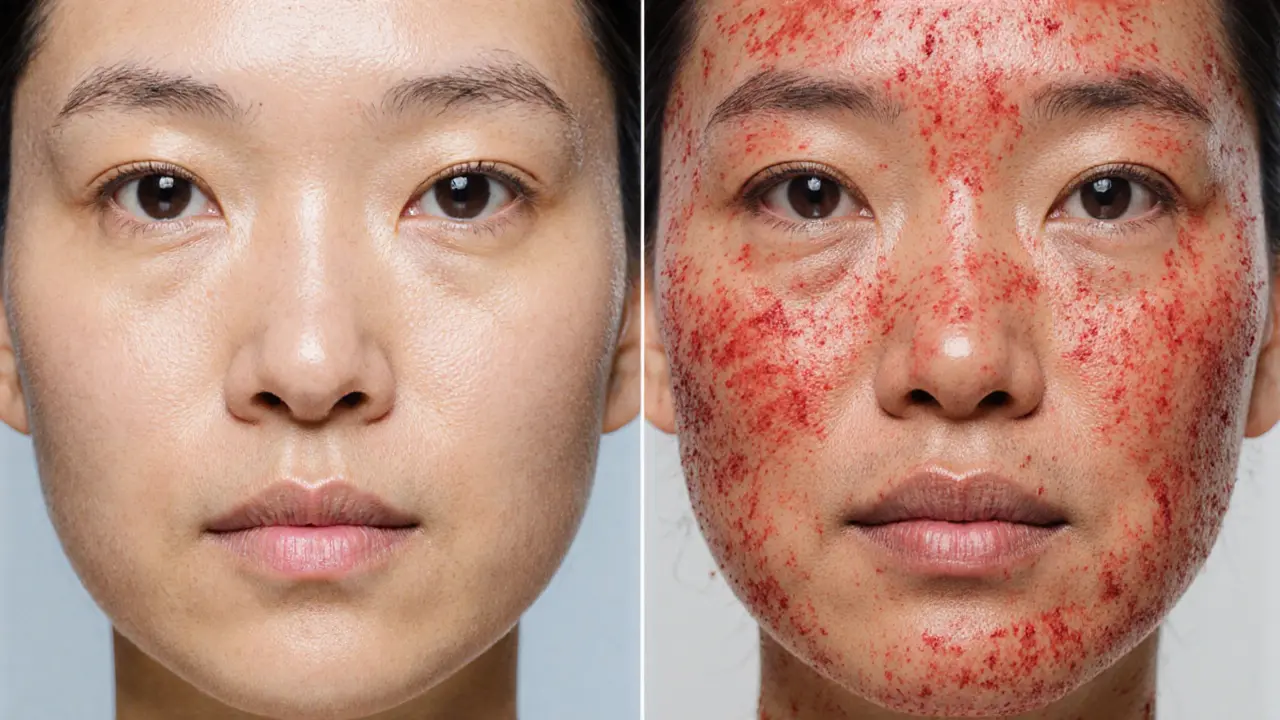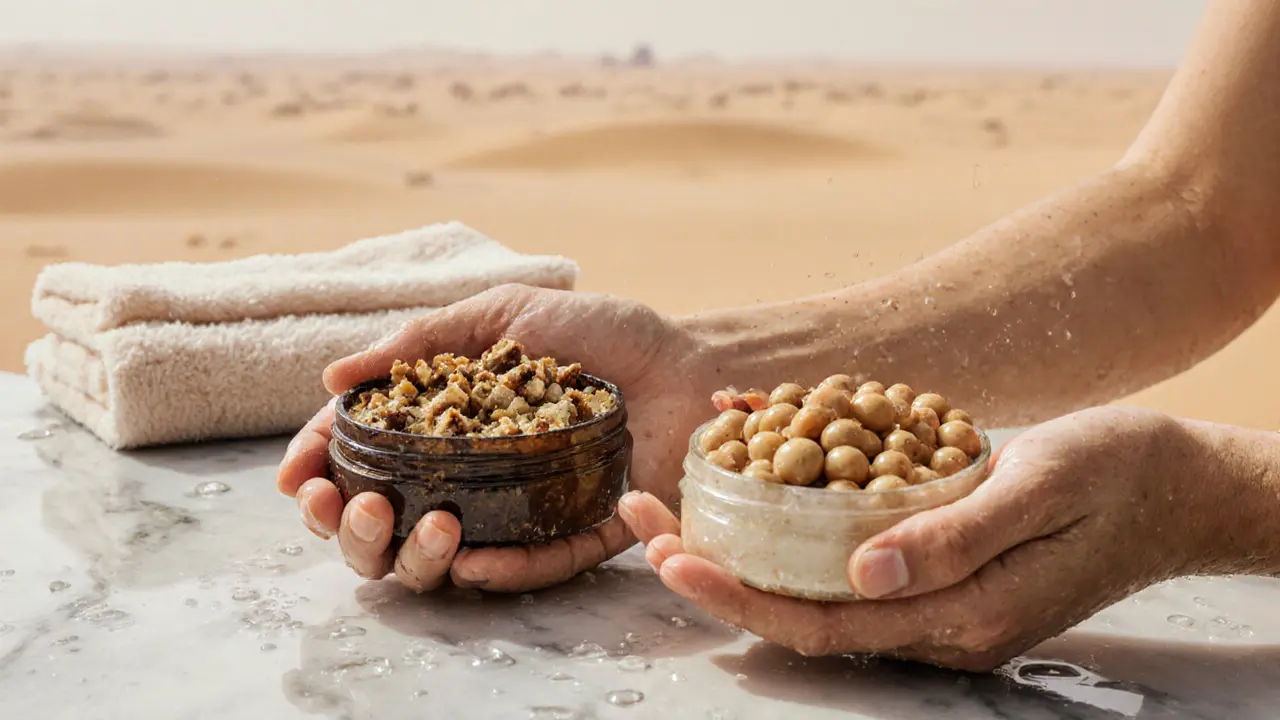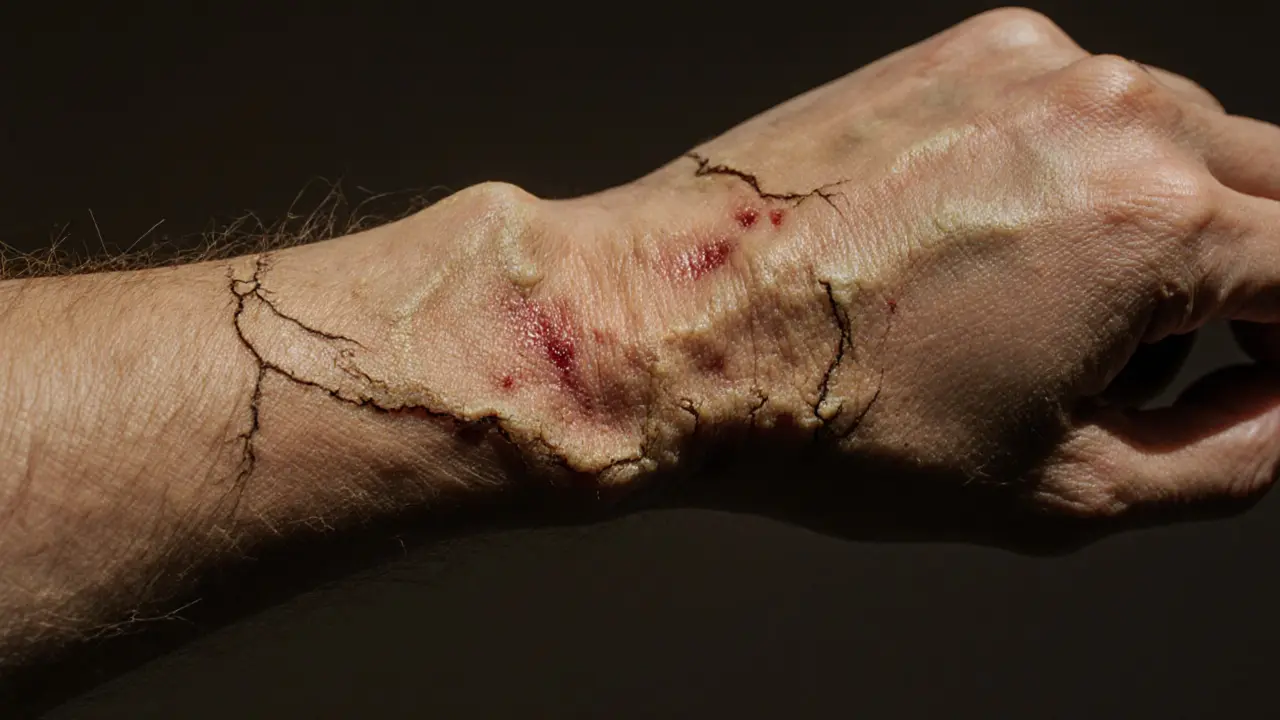When it comes to smooth, glowing skin, body scrubs are often praised as a must-have in self-care routines. But here’s the truth most ads won’t tell you: they’re not harmless luxury items. Used wrong, or too often, body scrubs can damage your skin, trigger breakouts, and even worsen conditions you’re trying to fix. In a place like Dubai, where heat, sweat, and hard water are part of daily life, the risks of improper scrub use are higher than you think.
Understanding the Basics of Body Scrubs
What Body Scrubs Actually Do
Body scrubs are abrasive products designed to slough off dead skin cells. They typically contain physical exfoliants-like sugar, salt, ground nut shells, or microbeads-or chemical ones like AHAs and BHAs. The goal is to reveal fresher skin underneath. Sounds simple, right? But skin isn’t just a surface-it’s a protective barrier. When you scrub too hard or too often, you’re not just removing dead cells. You’re stripping away natural oils, disrupting your skin’s microbiome, and weakening its defense system.
How Body Scrubs Differ from Other Exfoliants
Not all exfoliation is the same. Chemical exfoliants like glycolic acid or salicylic acid work by dissolving the glue between dead skin cells. They’re gentler and penetrate deeper without physical friction. Body scrubs rely on grit. That means they’re more aggressive. Think of it like scrubbing a pan with steel wool versus soaking it in warm soapy water. One cleans, the other can scratch.
| Feature | Body Scrub | Chemical Exfoliant |
|---|---|---|
| Exfoliation Type | Physical (abrasive) | Chemical (dissolves) |
| Penetration Depth | Surface only | Deeper layers |
| Risk of Microtears | High | Low |
| Best For | Thick, calloused skin | Fine texture, acne-prone skin |
| Frequency Recommended | 1-2 times per week | 2-4 times per week |
Who Should Be Cautious With Body Scrubs
Not everyone benefits from scrubs. If you have sensitive skin, eczema, rosacea, psoriasis, or active acne, scrubs can make things worse. Even if your skin looks normal, if it stings when you apply lotion or turns red after washing, you’re likely already compromised. People in hot, dry climates like Dubai face extra challenges-hard water leaves mineral deposits on skin, and sweat traps scrub particles, increasing irritation risk.
Disadvantages of Body Scrubs You Need to Know
Over-Exfoliation: The Silent Skin Killer
Using a body scrub every day sounds like a good idea-until your skin starts peeling, burning, or feeling tight. Over-exfoliation strips your skin’s natural lipid barrier. This barrier keeps moisture in and irritants out. When it’s damaged, your skin becomes dry, flaky, and more prone to infection. In Dubai’s climate, where humidity is low and AC dries out the air, this can lead to chronic dehydration. Many people mistake this dryness for “need for more scrub,” creating a vicious cycle. The American Academy of Dermatology warns that daily physical exfoliation can cause long-term thinning of the epidermis, making skin more vulnerable to UV damage and aging.
Microtears and Inflammation
Even gentle scrubs can cause tiny tears in the skin-microtears-that you can’t see. These openings let bacteria in, trigger inflammation, and can lead to breakouts, redness, or even folliculitis (infected hair follicles). In humid environments, like after a gym session or sauna, those microtears become breeding grounds for bacteria. I’ve seen clients come in with angry red bumps on their backs and thighs after switching to a daily sugar scrub. They thought it was clearing their skin. It was actually causing it.
Ingredients That Backfire
Not all scrubs are created equal. Many contain synthetic fragrances, parabens, or plastic microbeads that are banned in the EU and Canada but still sold in other regions. Fragrances are one of the top causes of contact dermatitis. Microbeads don’t just harm the ocean-they clog pores and sit on skin, especially in areas with coarse hair like legs and underarms. Even natural ingredients like walnut shells or apricot pits are too jagged for skin. The FDA has flagged these as unsafe for facial use-and the same risks apply to the body.
Worsening Skin Conditions
If you have keratosis pilaris (those little bumps on your arms), eczema, or psoriasis, scrubs can inflame the affected areas. Aggressive scrubbing triggers the skin’s defense response, making bumps more raised and itchy. In some cases, it can lead to post-inflammatory hyperpigmentation-dark spots that linger for months. People with darker skin tones are especially at risk. A 2023 study in the Journal of Clinical and Aesthetic Dermatology found that 68% of patients with melasma saw flare-ups after using physical scrubs.
Increased Sun Sensitivity
After scrubbing, your skin is more exposed. New skin cells haven’t had time to build up melanin or strengthen their barrier. If you head outside after a scrub-especially in Dubai’s intense sun-you’re increasing your risk of sunburn and long-term UV damage. Many people don’t realize that even a single scrub session can make your skin more vulnerable for up to 48 hours.

When Body Scrubs Are Actually Harmful
After Waxing or Laser Treatments
Wait at least 72 hours after waxing, laser hair removal, or chemical peels before using any scrub. Your skin is raw. Scrubbing too soon can cause blistering, scarring, or permanent pigment changes. In Dubai, where laser treatments are common, many clients come in with red, swollen skin because they scrubbed the day after their session. It’s avoidable.
If You Have Open Cuts or Sunburn
Never scrub over broken skin, cuts, burns, or rashes. Salt and sugar crystals act like sandpaper on exposed nerves. It’s painful, risky, and can lead to infection. If you’ve been sunburned, treat your skin like a wound-cool compresses, fragrance-free moisturizers, and patience. Scrubbing will only make it worse.
Using Scrubs on the Face
Even if a product says “body and face,” don’t do it. Facial skin is five times thinner than body skin. The particles in body scrubs are too large and harsh. You’ll get microtears, enlarged pores, and irritation. Use facial exfoliants designed for delicate skin instead.
How to Use Body Scrubs Safely
Choose the Right Formula
Look for scrubs with rounded exfoliants like jojoba beads, ground rice, or fine sea salt. Avoid anything with jagged particles like nut shells or crushed fruit pits. Skip fragranced versions-opt for unscented or those with calming oils like chamomile or calendula. Always check the ingredient list. If you can’t pronounce half the items, put it back.
Limit Frequency and Pressure
Once a week is enough for most people. Twice a week only if your skin is very thick or calloused (like feet). Use light, circular motions-no scrubbing like you’re cleaning a floor. Rinse with lukewarm water. Pat dry. Don’t rub with a towel.
Follow With Moisturizer
Always apply a rich, fragrance-free moisturizer within 3 minutes after scrubbing. This locks in hydration and helps repair the barrier. Look for ceramides, hyaluronic acid, or squalane. In Dubai’s dry climate, this step isn’t optional-it’s essential.

FAQ: Common Questions About Body Scrubs
Can body scrubs cause acne?
Yes. Scrubs can clog pores, especially if they contain oils or synthetic ingredients. The physical abrasion also irritates hair follicles, leading to folliculitis-which looks like acne but is an infection. If you break out after using a scrub, stop immediately. Switch to a chemical exfoliant with salicylic acid instead.
How often should I use a body scrub?
Once a week is ideal for most skin types. If you have thick, dry skin (like on heels or elbows), twice a week is okay. But if your skin feels tight, red, or itchy afterward, you’re overdoing it. Less is more.
Are natural scrubs safer than commercial ones?
Not necessarily. Natural doesn’t mean gentle. Walnut shells, coffee grounds, and sea salt can be just as harsh-or worse-than synthetic beads. The key is particle shape and size, not origin. Look for rounded, fine exfoliants regardless of whether they’re labeled “natural.”
Can I use a body scrub if I have sensitive skin?
If you have sensitive skin, skip physical scrubs entirely. Try a gentle chemical exfoliant with lactic acid or enzymes. They’re far less irritating and just as effective. If you must scrub, use a product labeled “for sensitive skin” and test it on a small patch first.
Do body scrubs help with cellulite?
No. Cellulite is fat pushing through connective tissue under the skin. Scrubs only remove surface cells-they don’t break down fat or alter connective tissue. Any temporary “smoothing” you see is just from increased blood flow and hydration. It fades within hours. Don’t waste money on scrubs marketed as cellulite solutions.
Conclusion: Why Mindful Use Matters
A Path to Healthier Skin
Body scrubs aren’t evil. Used wisely, they can help slough off dull skin and improve product absorption. But their disadvantages are real-and often ignored. The goal isn’t to scrub until your skin glows. It’s to protect your skin’s natural balance.
Try It Mindfully
If you love the feeling of a scrub, keep using it-but cut back. Choose gentler formulas. Listen to your skin. If it’s stinging, flaking, or breaking out, it’s telling you to stop.
Share Your Journey
Tried a body scrub that ruined your skin? Or one that actually worked? Share your experience in the comments-your story might help someone avoid a mistake.
Some links may be affiliate links, but all recommendations are based on research and quality.
Word count: 1,678
Suggested Images
- A close-up of a cracked, dry skin patch after over-scrubbing
- Side-by-side comparison: smooth skin after proper moisturizing vs. red, irritated skin after aggressive scrubbing
- Hands holding two scrubs-one with visible jagged particles, one with fine, rounded beads
- A person applying moisturizer right after showering, with a towel draped nearby
- A skincare shelf with a body scrub next to a bottle of lactic acid serum
Suggested Tables
- Comparison: Body Scrub vs. Chemical Exfoliant (already included)
- Safe vs. Unsafe Scrub Ingredients (Ingredient | Risk Level | Example)
- When to Avoid Body Scrubs (Condition | Risk | Recommended Alternative)


Helen Chambers
October 29, 2025 AT 03:03This post literally saved my skin 😭 I was scrubbing daily like a maniac after seeing those TikTok glow-ups. Turns out I was just giving myself a chemical burn in disguise. Now I use a gentle jojoba scrub once a week and my back breakouts? Gone. Thank you for not sugarcoating it 💖
Jenna Carlson
October 29, 2025 AT 14:27ok but like why do people even use scrubs anymore? like i get it feels good but its basically sandpaper on your skin. i switched to chemical exfoliants and my skin stopped looking like a raisin. also microbeads are evil and also bad for the ocean so like kill em all 🌍
Caryn Guthrie
October 30, 2025 AT 07:43Wow. So you're saying that the entire beauty industry is lying to us? That scrubs aren't magic? Shocking. Next you'll tell me that drinking water doesn't cure acne. I mean, I've been using walnut shell scrubs for years and my skin looks like a desert map. But hey, maybe I'm just unlucky. Or maybe this article is just fearmongering. 🤷♀️